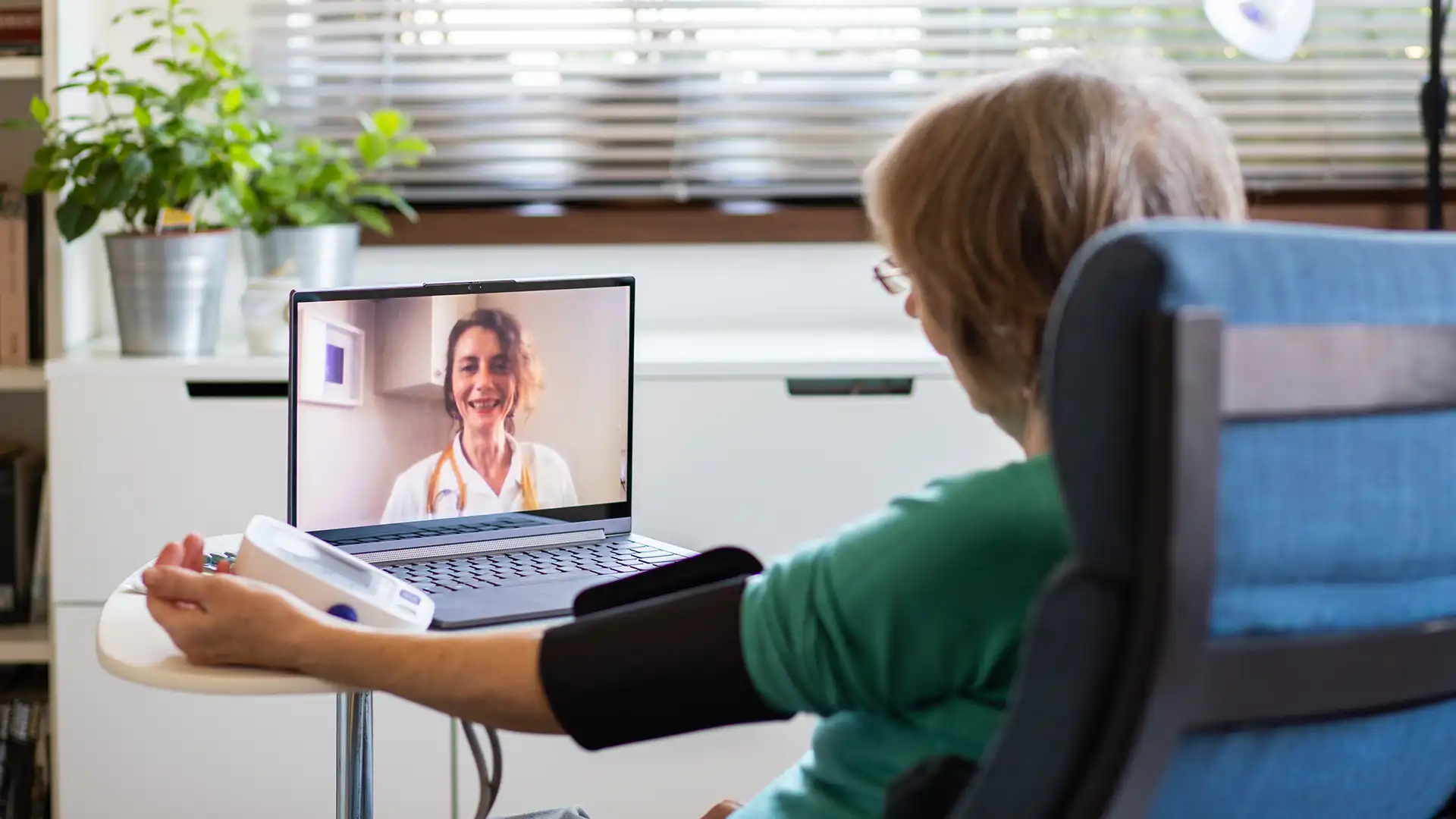Recovering from an injury or surgery often takes patience, guidance, and consistency. For many patients, getting to in-person appointments can be a challenge. That’s where telehealth physical therapy comes in. With the help of secure video sessions and digital tools, patients can work with licensed therapists from home.
This approach is not just about convenience, it’s about results. Studies show that patients who follow guided home-based therapy programs through telehealth can achieve similar recovery outcomes to in-person visits. That means better flexibility, reduced pain, and improved mobility without leaving your living room.
In this guide, we’ll explore how telehealth therapy works, what you should expect, and seven simple tips to make your recovery faster and more effective.
What Is Telehealth Physical Therapy?
Telehealth physical therapy refers to the use of technology, usually secure video platforms, to connect patients with licensed physical therapists.
During these sessions, therapists can:
- Assess your movement and progress
- Guide you through personalized exercises
- Answer questions about pain, strength, or mobility
- Adjust your recovery plan as you improve
Unlike generic online workouts, this is tailored medical care. Each program is built around your specific injury or condition, ensuring a more effective recovery process and better long-term outcomes.
Why Choose Online Physical Therapy?
Many patients are turning to online physical therapy for its accessibility. Whether you live far from a clinic, have limited transportation, or want to avoid crowded waiting rooms, virtual care offers a safe and effective alternative.
Some benefits include:
- Flexible scheduling that works around work and family life
- One-on-one guidance without commuting stress
- Real-time feedback on your form
- Reduced costs compared to frequent in-person visits
While some conditions still require hands-on care, many patients find that physical therapy telehealth helps them stay consistent with exercises, which is the most important factor in recovery.
A Growing Solution Physical Therapy
The connection between telehealth and physical therapy has grown significantly in recent years. Clinics now integrate hybrid models where patients combine in-office visits with virtual check-ins. This ensures that patients receive hands-on evaluation when necessary but can still maintain regular progress at home.
Providers have also started using apps that track patient progress. These telehealth solutions make it easy for therapists to monitor exercise completion and pain levels, ensuring better long-term results.
7 Tips for Faster Recovery With Telehealth Physical Therapy
Whether you are recovering from surgery, an injury, or managing a chronic condition, consistency is key. Below are seven practical tips to get the most out of your program.
1. Create a Dedicated Exercise Space
Set aside a safe, clutter-free area at home. Even a small corner works if you have enough room to stretch or move comfortably. A yoga mat, chair, and resistance bands are often all you need.
A consistent space helps build routine and reduces distractions. Patients who prepare their environment are more likely to follow through with their sessions.
2. Stick to Your Schedule
Consistency is the foundation of recovery. Treat your virtual appointments just like in-person visits. Mark them on your calendar and prepare ahead of time.
Skipping sessions slows down progress. Regular practice helps your body heal, improves mobility, and builds strength faster.
3. Communicate With Your Therapist
Always share feedback during sessions. If an exercise feels too easy, too hard, or causes unusual discomfort, let your therapist know.
Communication helps your therapist adjust your plan so it matches your progress. Remember, the goal of telehealth for physical therapy is to give you care that feels personalized, not generic.
4. Use Technology to Your Advantage
Position your camera so your therapist can see your movements clearly. Good lighting and a stable device setup make it easier for them to give feedback.
Some programs also allow you to record your exercises for later review. Using these tools helps reinforce proper form and prevent injury.
5. Stay Accountable Between Sessions
Your therapist may assign “homework” exercises. Doing them consistently between appointments is critical. Patients who complete their assigned exercises often recover weeks faster compared to those who only exercise during sessions.
Keeping a simple journal or using an app to log progress can help you stay motivated.
6. Manage Pain Smartly
Pain is common during recovery, but it should not be overwhelming. Ask your therapist how to recognize the difference between healthy muscle soreness and harmful pain.
If pain persists, your provider can recommend strategies, adjustments, or in some cases, suggest in-person evaluation.
7. Celebrate Small Wins
Recovery can feel slow, but each improvement matters. Whether you can bend your knee a little further, lift more weight, or walk with less discomfort, acknowledge your progress.
Recognizing these milestones builds confidence and keeps you motivated to continue.
When Is Virtual Physical Therapy a Good Choice?
Virtual physical therapy is effective for a wide range of conditions, such as:
- Post-surgical recovery (like knee or hip replacement)
- Sports injuries
- Chronic pain conditions like arthritis
- Balance and mobility training for seniors
- Neurological recovery (such as after a stroke)
For complex injuries, therapists may recommend occasional in-person evaluations, but for many patients, virtual care is enough to maintain progress.
Telehealth vs. In-Person Physical Therapy
It’s natural to wonder whether telehealth works as well as in-office sessions. The answer often depends on the patient’s condition and commitment.
- Telehealth strengths: Convenience, flexibility, and consistent guidance.
- In-person strengths: Hands-on manual therapy, equipment use, and direct assessment.
Most clinics encourage a hybrid approach, giving patients the best of both worlds.
Safety Considerations
While telehealth is safe for most patients, you should always:
- Wear supportive shoes during exercises
- Clear your space to prevent falls
- Stay hydrated and ensure proper equipment setup
- Follow your therapist’s instructions carefully
If you feel dizzy, short of breath, or experience severe pain, then it’s a sign to stop immediately and contact your healthcare provider.
The Role of Telehealth in Physical Therapy
Modern telehealth solutions have made physical therapy easier than ever. Secure apps, wearable trackers, and real-time video coaching give therapists insights they could not always get in short office visits.
These innovative tools also significantly improve patient engagement. Many patients feel more comfortable asking questions in a virtual environment, which leads to better understanding and stronger health outcomes.
Take Your Next Step
If you’ve been wondering how telehealth physical therapy could help you, now is the time to explore your options. Whether you’re recovering from surgery, easing chronic pain, or regaining strength after an injury, virtual sessions offer the flexibility and guidance you need. Talk to your provider today to see if virtual physical therapy is the right path for your recovery.
Book your appointment for telehealth today and take that important step towards improving your well-being. With the convenience of virtual consultations, you can receive personalized care from the comfort of your own home. Don’t wait any longer and reach out to your healthcare provider and discover how online physical therapy can support your journey to recovery.
Takeaways
Telehealth has transformed the way patients recover from injuries and surgeries, offering a convenient alternative to traditional in-person visits. With the right approach, telehealth physical therapy provides safe, effective, and personalized care that can rival the results of face-to-face appointments. By setting up your space effectively, staying consistent with your sessions, and maintaining regular communication with your therapist, you can create a supportive environment for recovery.
Furthermore, telehealth empowers patients to take charge of their rehabilitation journey. It eliminates geographical barriers and provides access to specialized care that might not be available locally. As you engage in your therapy, you will build strength and regain mobility, allowing you to return to your daily life with renewed confidence. With dedication and the right resources, telehealth can be a vital tool in your recovery process.
Frequently Asked Questions (FAQs)
How effective is telehealth physical therapy compared to in-person care?
For a variety of medical conditions, the outcomes from telehealth therapy are often similar to those achieved through traditional in-person care. The success of telehealth physical therapy largely depends on the consistency and dedication of the patient, as well as the quality of guidance provided by the therapist throughout the program.
Do I need special equipment at home?
Not necessarily. Most telehealth programs are designed to be accessible and often utilize bodyweight exercises, resistance bands, or even common household items that you likely already have on hand. This makes it easy for patients to perform exercises in the comfort of their own home without the need for expensive equipment.
Can children or seniors benefit from online therapy?
Absolutely! Telehealth is effective for individuals of all ages, including children and seniors, as long as the program is specifically tailored to meet their unique needs and abilities. This personalized approach helps ensure that all patients receive the appropriate level of care.
What technology do I need for a virtual physical therapy session?
Most programs only require a smartphone, tablet, or computer with a camera and a stable internet connection. A quiet, well-lit space at home is usually enough. Some therapists may recommend optional tools like a yoga mat or resistance bands, but these are not always necessary.
____________________________________________________________________________
Medically Reviewed By: Ma. Lalaine Cheng




